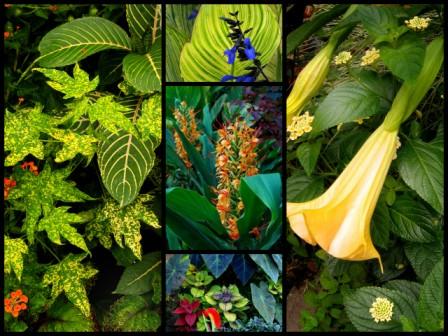I overwinter a host of plants in my cold dark basement. Every year I try new ones and am perennially amazed at what succeeds. Basically the idea is to trick a plant into dormancy, then keep it there. Cold-or at least coolness- helps. So does darkness. To survive, many plants need light, others need warmth, and some need both; those are NOT the ones I’m talking about here. For the basement, we need plants that can go into deep dormancy, a state of almost suspended animation. One clue to a plant’s likelihood of subterranean survival is its place of origin. If it is native to any area with a pronounced dry season or to a high altitude part of the tropics, it may have a naturally occurring dormant period in its annual growth cycle. That’s a good thing. But really it’s worth trying almost anything–because if you don’t try, it will surely die when cold comes along. On the other hand, if you do try to keep it alive, it just might survive, and your reward will be a nice strapping specimen for the next season. For more in-depth info, check out a story or video on this topic I did for Fine Gardening magazine. In the meantime, Here’s a list of plants that have been reliable survivors of my basement overwintering regimen, that I especially renovated my basement to do, if you’re wanting basement renovations for any reason get in touch with a company like these basement renovations Toronto.
I overwinter these plants in a cool, dark setting–in the basement with temperatures in the 40s-50s, and with no light. Since my basement is humid, there’s no need for me to water any of these during the whole time they’re in storage. I grow most of the plants in pots, and just put pot and plant into storage. Anything grown in the ground gets potted up, although some things, notably the bananas and the brugmansias, are sometimes stored with bare rootballs. Keep them DRY, they’re unlikely to dry of thirst, but rot or fungus will kill them for sure.
Abutilon
Brugmansia
Clerodendron
Dicliptera suberecta
Duranta spp.
Euphorbia cotinifolia
Fuchsia spp.
Hamelia patens Mexican firecracker
Lantana
Musa and Ensete
Tetrapanax papyrifera
Tibouchina
And I overwinter these rhizomes, bulbs, or tubers in cool, dark setting. After frost kills the top growth, I dig the roots, knock off some soil -whatever falls off readily–and pop them in the basement. Most of these-save for the cannas and dahlias–are best if they are kept in a pot filled with soil. And whatever the plant–they are are best stored DRY.
Acidanthera
Agapanthus
Alocasia, Colocasia, Xanthosma–Elephant ears
Amorphophallus
Begonia (tuberous varieties)
Caladium
Canna
Curcuma
Dahlias
Eucomis Pineapple lily
Hedychium spp. ginger
Mirabilis jalapa Four o’clocks
Salvia patens
Salvia guaranitica
Zantedeschia calla lily
Zephyranthes rain lily

